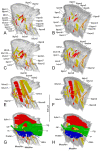The Morphological Transformation of the Thorax during the Eclosion of Drosophila melanogaster (Diptera: Drosophilidae)
- PMID: 37999092
- PMCID: PMC10671814
- DOI: 10.3390/insects14110893
The Morphological Transformation of the Thorax during the Eclosion of Drosophila melanogaster (Diptera: Drosophilidae)
Abstract
The model organism Drosophila melanogaster, as a species of Holometabola, undergoes a series of transformations during metamorphosis. To deeply understand its development, it is crucial to study its anatomy during the key developmental stages. We describe the anatomical systems of the thorax, including the endoskeleton, musculature, nervous ganglion, and digestive system, from the late pupal stage to the adult stage, based on micro-CT and 3D visualizations. The development of the endoskeleton causes original and insertional changes in muscles. Several muscles change their shape during development in a non-uniform manner with respect to both absolute and relative size; some become longer and broader, while others shorten and become narrower. Muscular shape may vary during development. The number of muscular bundles also increases or decreases. Growing muscles are probably anchored by the tissues in the stroma. Some muscles and tendons are absent in the adult stage, possibly due to the hardened sclerites. Nearly all flight muscles are present by the third day of the pupal stage, which may be due to the presence of more myofibers with enough mitochondria to support flight power. There are sexual differences in the same developmental period. In contrast to the endodermal digestive system, the functions of most thoracic muscles change in the development from the larva to the adult in order to support more complex locomotion under the control of a more structured ventral nerve cord based on the serial homology proposed herein.
Keywords: Drosophila melanogaster; anatomical morphology; eclosion; metamorphosis; thorax.
Conflict of interest statement
The authors declare no conflict of interest. The funders had no role in the design of the study; in the collection, analyses, or interpretation of data; in the writing of the manuscript; or in the decision to publish the results.
Figures









References
Grants and funding
LinkOut - more resources
Full Text Sources
Molecular Biology Databases

